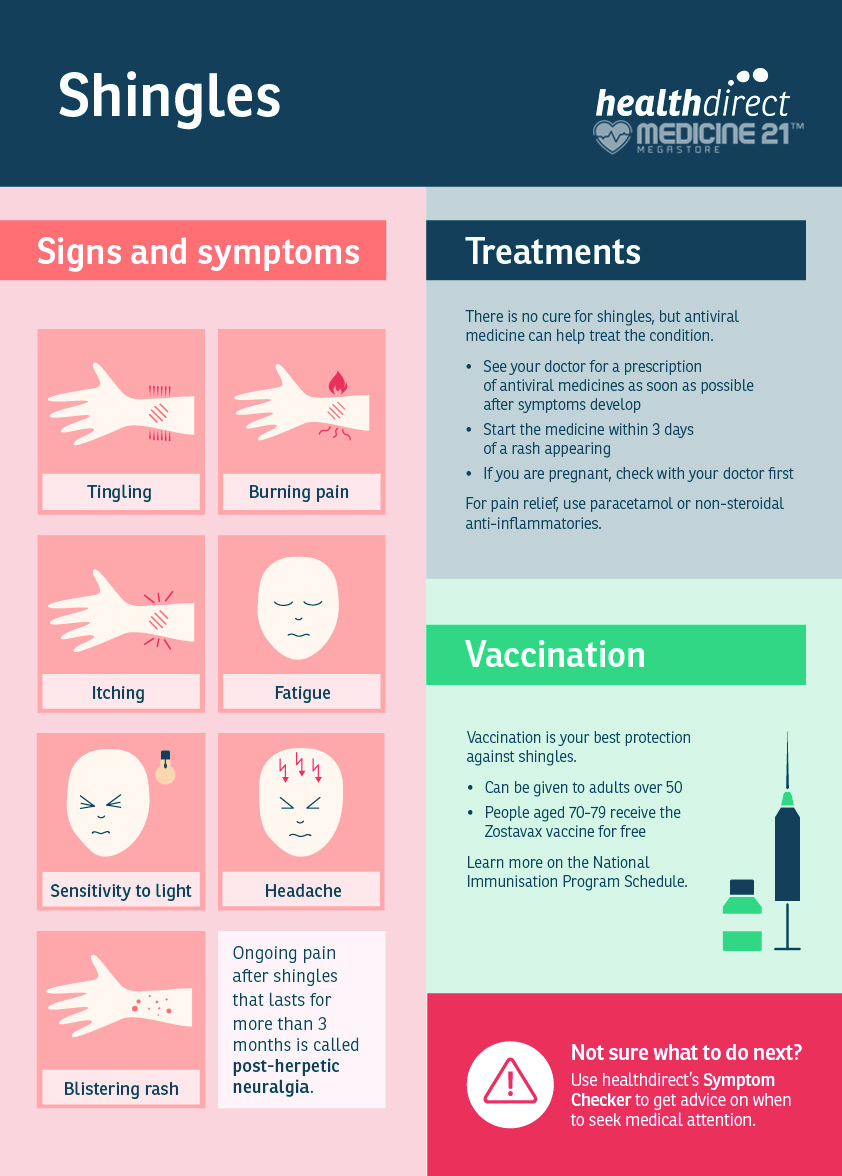
What is shingles?
Shingles is a viral infection that causes a painful, blistering rash. It is caused by the varicella-zoster virus, which is the same virus that causes chickenpox. You can only get shingles if you have had chickenpox in the past.
The shingles rash develops into painful blisters that may also be itchy, usually on one side of the body, either on the face, chest, back, abdomen or pelvis. They can take several weeks to settle.
In 1 in 10 people, the pain and tingling of shingles can last for months or even years. This is called post-herpetic neuralgia.
What are the symptoms of shingles?
The initial symptoms of shingles include:
- pain
- a burning, tingling or itching sensation
- a stabbing sensation
- sensitivity to touch
- numbness in the affected area of the body
- sensitivity to light
- fever and/or headache
- fatigue
Two to 3 days after these symptoms appear, a painful rash will appear on the sensitive area of skin, usually on one side of the body in the area of one skin nerve (called a dermatome).
At first this rash consists of painful red bumps that quickly develop into fluid-filled blisters, which will eventually have a crusty surface. The rash can last for 10 to 15 days.

